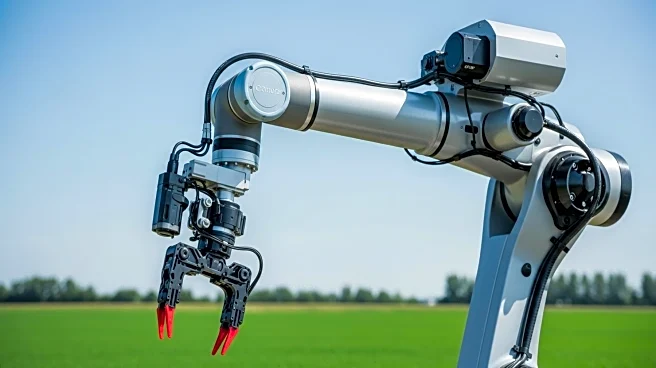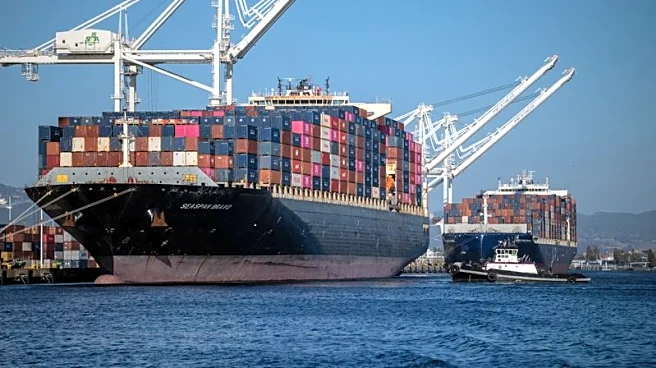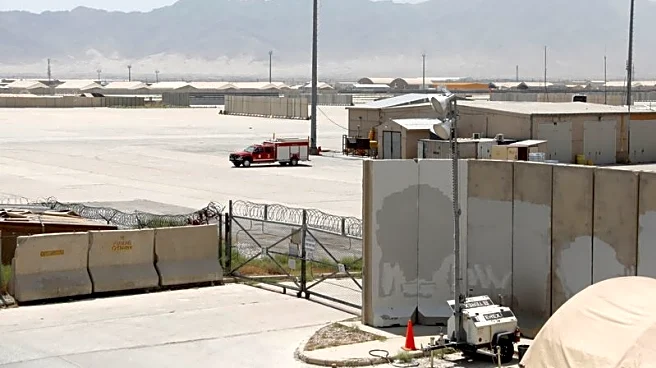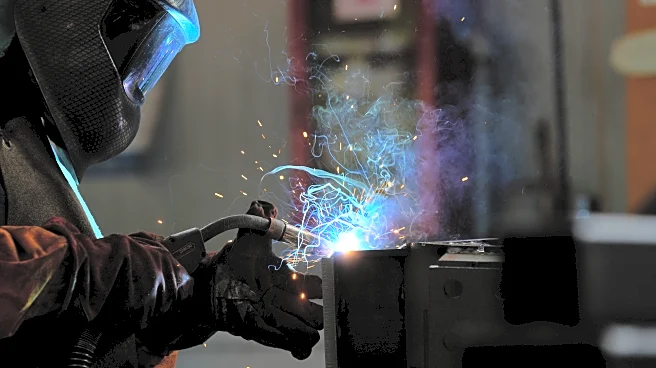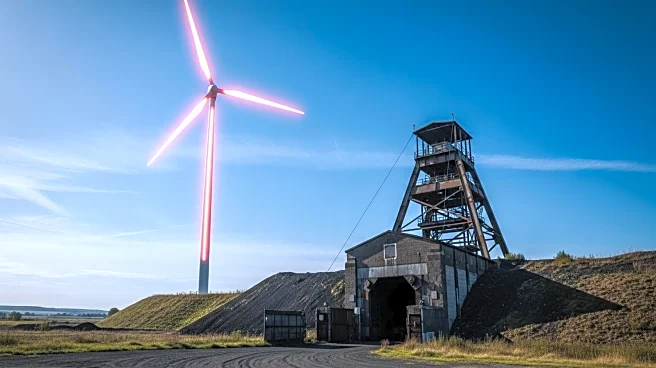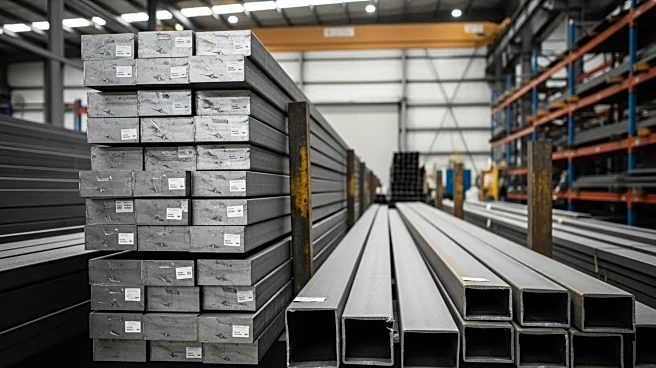What's Happening?
India is emerging as a potential major market for robotics and automation, driven by its large population and growing manufacturing sector. Initiatives like 'Make in India' and investments from global companies are fostering this growth. However, India faces challenges such as reliance on cheap labor and the need for infrastructure and cultural shifts towards precision manufacturing. Despite these hurdles, the adoption of industrial robots is increasing, with India installing 8,510 new robots in 2023, marking a 59% growth. The automotive industry, a significant user of robotics, could play a crucial role in this transition.
Why It's Important?
India's move towards robotics and automation could significantly impact its manufacturing sector, enhancing productivity, quality, and global competitiveness. As wages rise and robots become more affordable, the economic case for automation strengthens. This shift could position India as a key player in the global manufacturing landscape, potentially rivaling China. The transition also aligns with broader trends towards Industry 4.0, emphasizing smart manufacturing and digital transformation.
What's Next?
India's success in becoming a major robotics market will depend on overcoming labor reliance, investing in training, and fostering a culture of precision. If these changes are implemented, India could enhance its manufacturing capabilities and compete more effectively in global markets. The government and industry leaders may need to collaborate on policies and initiatives to support this transition, potentially leading to increased foreign investment and technological partnerships.
Beyond the Headlines
The shift towards automation in India raises questions about labor displacement and the need for workforce reskilling. As automation becomes more prevalent, ethical considerations regarding employment and economic inequality may arise. Addressing these issues will be crucial for ensuring a balanced and sustainable transition to a more automated economy.

